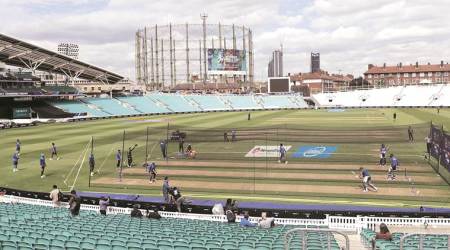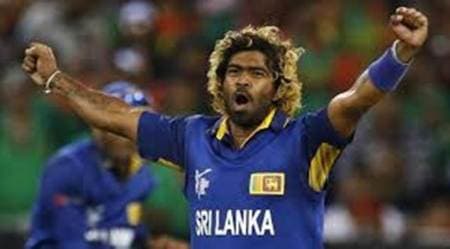 Duckworth-Lewis method is used to calculate targets in rain-affected limited over cricket matches. (Source: Reuters)
Duckworth-Lewis method is used to calculate targets in rain-affected limited over cricket matches. (Source: Reuters)
Rain has been a regular feature in the ICC Champions Trophy 2017 being played in England and Wales. Australia are quite easily the most affected team with both their matches interrupted and then called off with consistent showers. When the matches do continue, as has been the case for India vs Pakistan and Pakistan vs South Africa, Duckworth-Lewis method has been employed which has brought out a result. While in India’s win over Pakistan, the method didn’t really turn the tables dramatically, the same cannot be said for Pakistan’s win over the Proteas. “Would have been more attacking if I knew it would only be 27 overs,” said AB de Villiers as South Africa fell short by 19 runs. In more dramatic and yet more excruciating examples of the method, South Africa crashed out of the 2003 World Cup as they were level with the par score, one run more and they would have made it through to the next stage.
Who are Duckworth and Lewis?
The method devised by two statisticians Frank Duckworth and Tony Lewis is the prevailing system used to adjust victory targets in limited overs cricket in the event of a rain delay. The mathematicians have long tried to figure the best course of action to devise targets in case of rain but never been able to find a perfect method. Duckworth-Lewis method comes close to that target using few anomalies.
The big question – How does D/L method work?
Using the D/L method, it takes into consideration that a team has two resources – overs left to face and wickets left in the bag. So to calculate the final score, these two numbers are looked at in combination.
“It is much easier to chase 100 runs with ten wickets left than with one wicket left, but the D/L method is the first of its kind to recognise this,” said Simon Hughes a cricket statistician.
The simple way of looking at D/L method is this, if the chasing side is ahead of the par score when rain comes calling, then they are awarded the win if no further play can take place. If a side is asked to chase 300 runs for a win and rain is forecast, it is expected for the second team to go on the attack to stay ‘in front’ of the opposition.
EXAMPLE: If a side, Team A, scores 300 runs batting first and then it rains before the second team, Team B, starts their chase, D/L method would come into play if there is considerable time lost. Say the match is reduced to 25 overs, then the target would be reduced too. And considering Team B still have 10 wickets left despite the reduced overs, the target won’t be exactly half (in this case, 151). The reason for this – both resources of overs left and wickets left need to be kept in consideration. For Team B, the overs left, as a resource, has reduced but wickets left, as a resource, has increased.
Target and Par Score are different
In the recent Australia vs Bangladesh game at The Oval, Bangladesh batted first and scored 182 runs. Had it rained in the starting of the innings leaving 20 overs to play, a fair target could have been near 100-110 considering 60% resources lost in the overs left while all 10 wickets intact. So from a required run rate of 3.66 to 5.50 keeping in mind both the resources.
Now, if rain had arrived after the inning had begun – say after 20 overs. Then the par scored is checked and it is something that is pre-decided and displayed on the screen at some venues. After 20 overs, it would have been checked whether Australia had passed the par-score for number of wickets lost at that juncture. Had Australia lost just one wicket after 20 overs, their score should have been 48/1. Now it is considered that Australia would have increased their scoring rate as the match progressed especially late-on as is the norm based on historical data.
Thing gets murkier when the interruptions happen mid-innings – as was the case with Pakistan vs South Africa. Then three things are taken into account: number of overs lost, stage of innings when overs are being lost and wickets in hand at the time of interruption. Example, in the New Zealand vs Australia contest, rain had struck midway with the match reduced to 46 overs a side. But Australia’s target wasn’t increased after NZ scored 291 runs. That is all because NZ were interrupted early on – after 9.3 overs and after losing just one wicket – which helped them to form plans accordingly. Had rain arrived after 40 overs, things would have been different.
Wickets in hand play a crucial role
Wickets in hand are an important resource when it comes to adjusting targets as per D/L method. If Team A was 80/6 after 20 overs, they would have lost 60% of their wickets and have 60% of overs remaining. The method also takes into account that these wickets lost are of top-order batsmen and assigns higher weightage to them because they are more susceptible to scoring big. If it rains at this stage and 10 overs are left, then their resources of wickets left gets better with four wickets for 10 overs. In that case, the eventual target would most probably be reduced for Team B.
D/L Method key points
Things to keep in mind during rain interrupted matches and D/L Method coming into the picture.
- Has a team had time to readjust their plans? 30 overs left vs 5 overs left.
- Overs lost due to the rain interruption?
- Wickets lost by a team at the time of rain interruption? Resources allocation depending on overs left to be bowled

